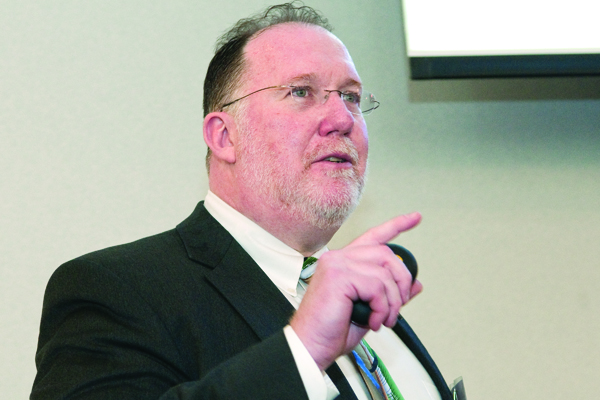Magnetic appeal

Some of the world’s earliest applications of magnets were for feng shui by ancient Chinese cultures, and in compasses for navigators sailing the globe. Today, next-generation magnets are being performed to advance new hybrid vehicles, wind turbines, and even the diagnosis and treatment of cancer, said Northeastern University professor Vincent Harris.
Harris, the William Lincoln Smith Chair Professor in Electrical and Computer Engineering, explored the magnet’s rich history and promising future on Thursday at Northeastern’s 47th annual Robert D. Klein University Lecture. The annual honor, established in 1964 as the University Lectureship and renamed in 1979 for the late mathematics professor, is presented to faculty members who have made major contributions in their field.
Harris is internationally renowned as a leader in the field of microwave materials and technologies.
One observation made of magnetism over the last 50 years, Harris said, is that the development of rare earth-based permanent magnets are making electric motors smaller, more powerful and adaptable to hybrid vehicles. Meanwhile, he cited magnetic fields present in hard disk drives make it possible to store vast amounts of data in devices such as iPods and computers.
Magnetism research is also offering a glimpse into the future of battling cancer, Harris said. Magnetized nanoparticles contained in a fluid injected into the body may be able to track down, attach to and kill tumor cells while leaving healthy cells intact. One such example, employing the concept that high fever kills tumors, involves nanoparticles coated with receptors that would attach themselves to tumor cells. Warm the nanoparticles, said Harris, and you might “burn” and kill the cancer cells.
“This is a tremendous breakthrough, in that we can functionalize the surface of these magnetic nanoparticles, and they can actually seek out and bind to cancer cells,” he said.
Humans, however, aren’t the only ones taking advantage of magnets. Harris pointed to a 2010 study by German researchers that found migratory birds have magnetic particles in the cells in their upper beaks bound to their sensory system.
Harris founded and directs the Center for Microwave Magnetic Materials and Integrated Circuits at Northeastern, where researchers are developing next-generation microwave materials and device solutions for radar and wireless communication technologies for U.S. defense and commercial industries.
Harris said the Center, created in 2004, offers a unique student experience by exposing students to materials science, physics and electrical engineering. The Center’s first group of 16 graduates has published 93 peer-reviewed journal articles, which collectively have more than 300 citations per year, he said.
“I think the proudest accomplishment we have is student-led research and student productivity,” Harris said.
View selected publications of Vincent Harris in IRis, Northeastern’s digital archive.





